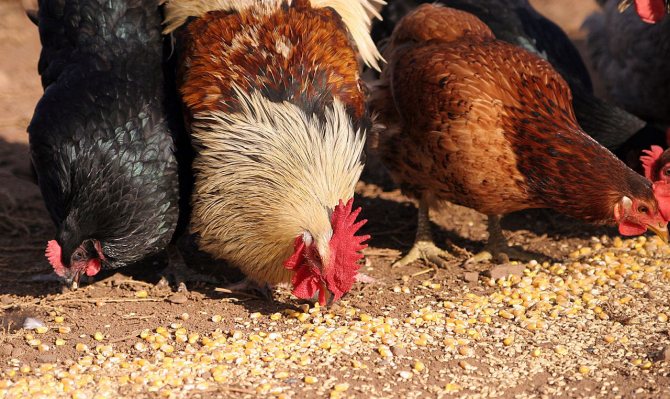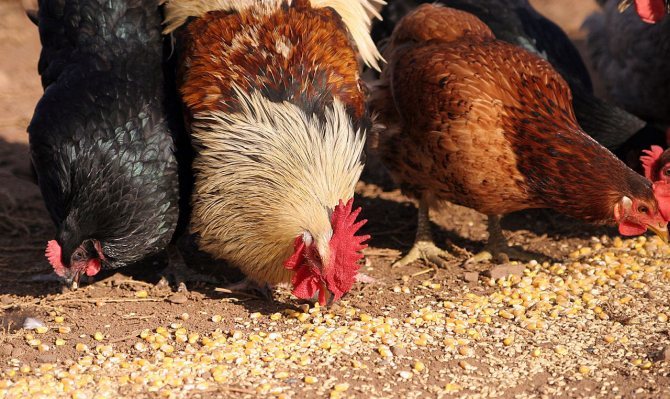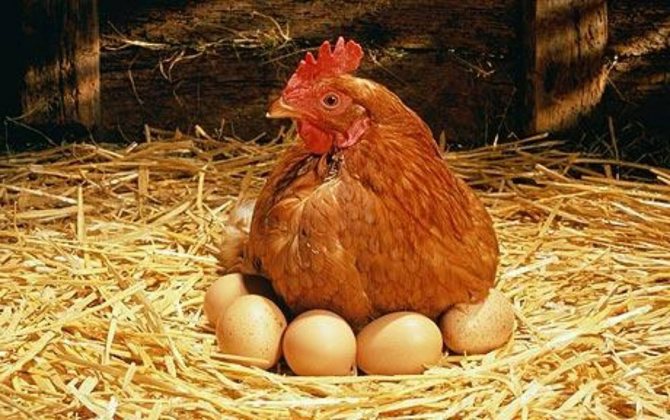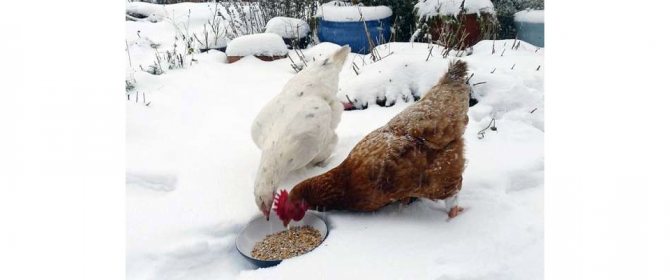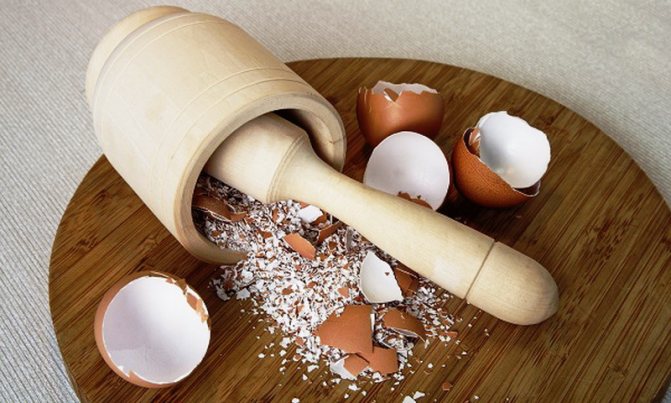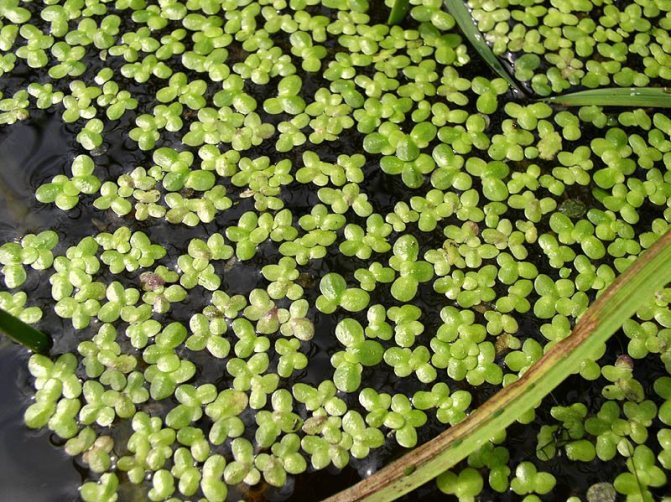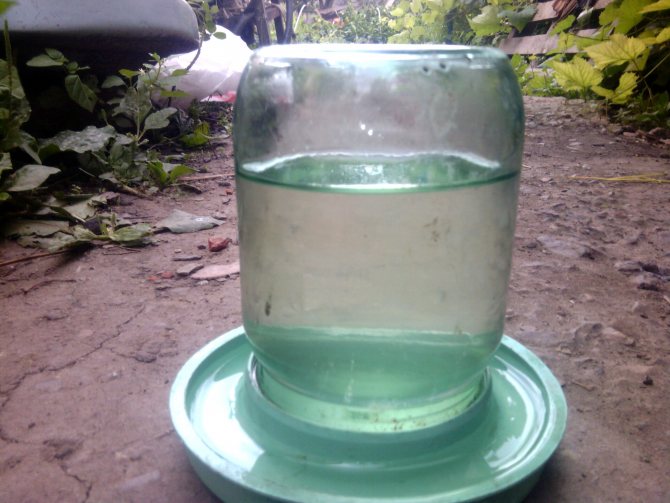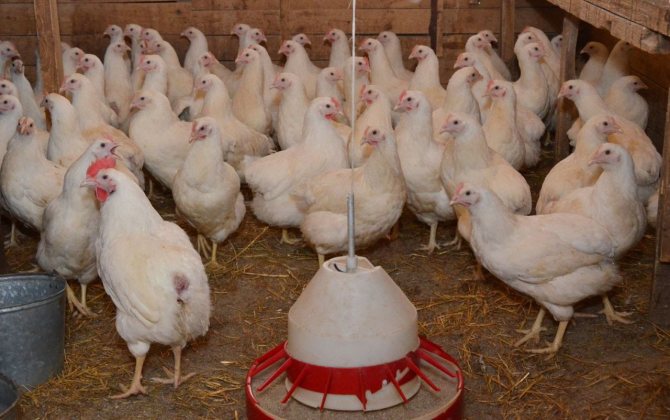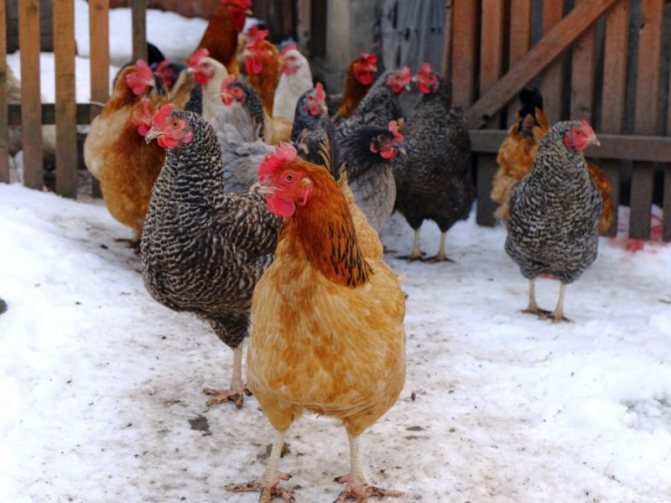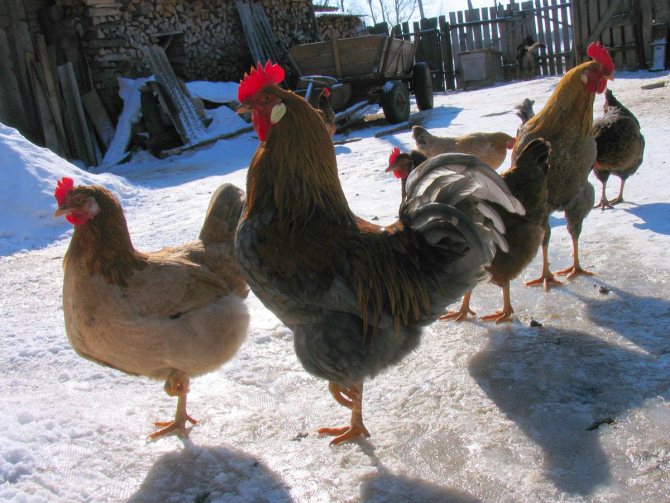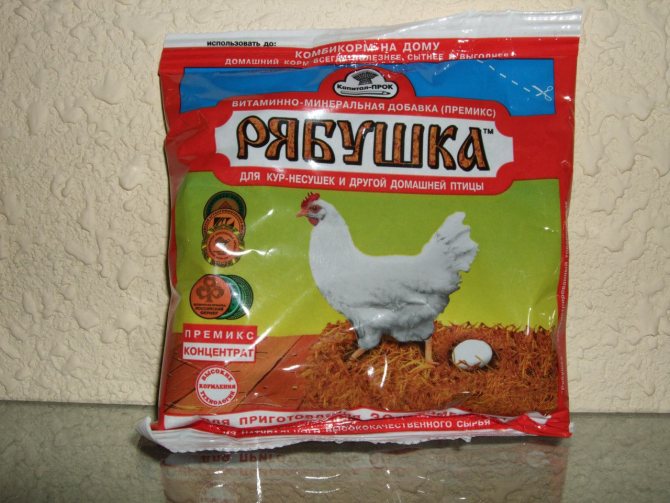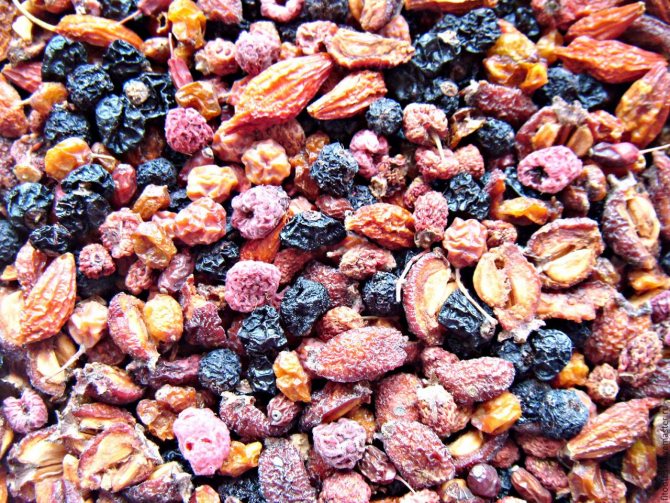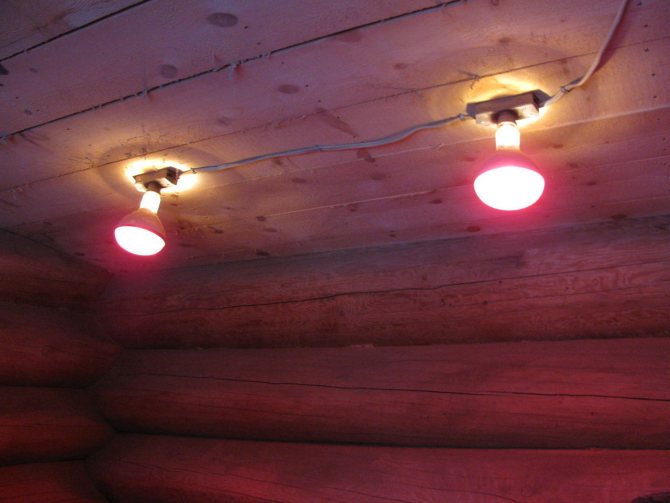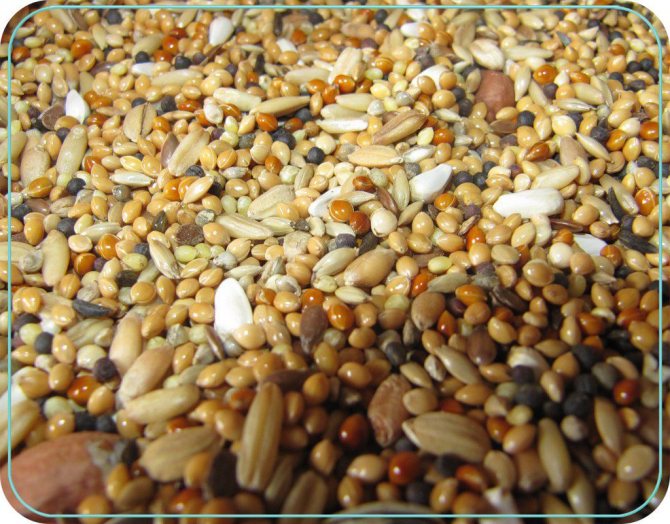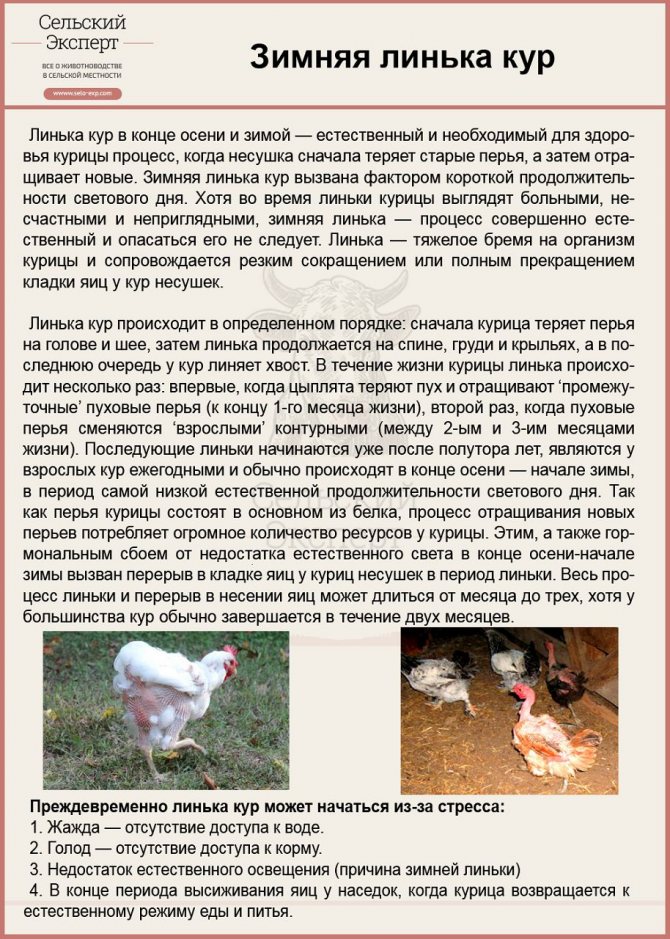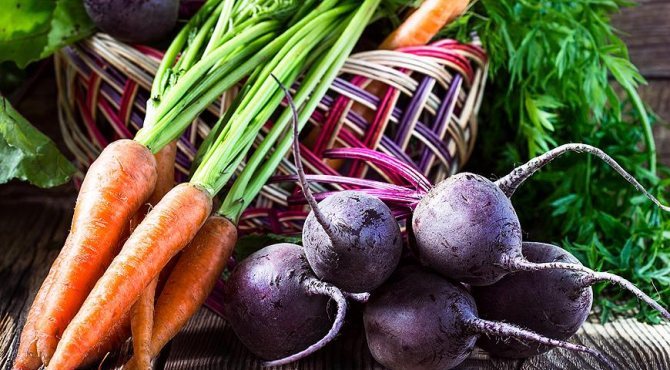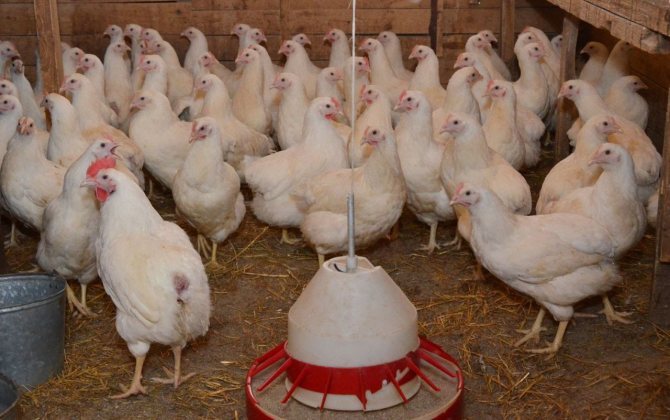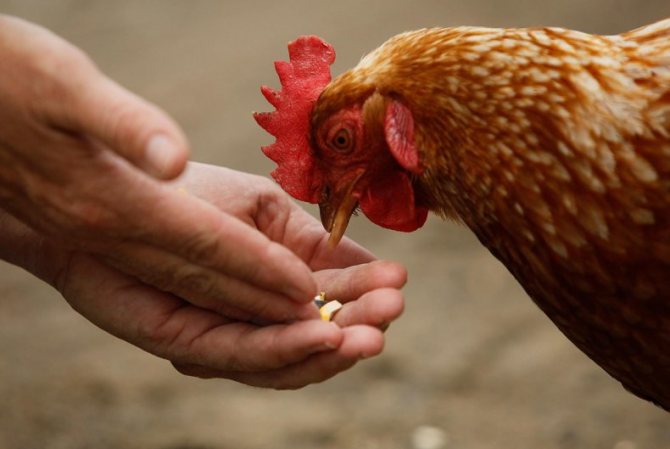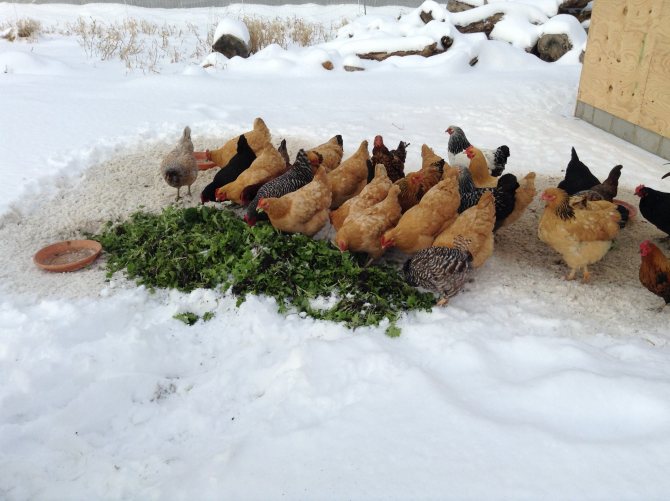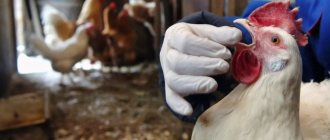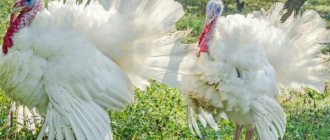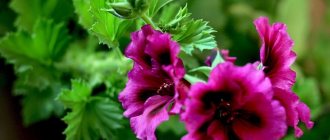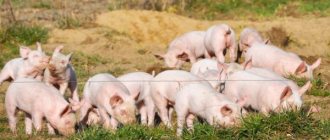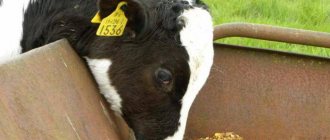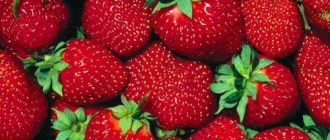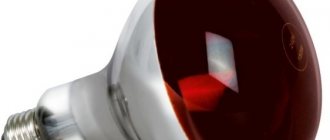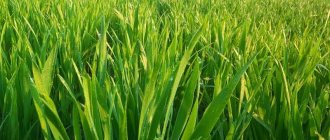Chicken coop microclimate
In winter, it is important to maintain optimal humidity and air temperature in the chicken coop. Due to the fact that birds spend most of the time indoors, care should be taken to ensure that the inside is regularly ventilated and heated.
Maintain the air humidity at 50-60% and the temperature at least 8-12 degrees to ensure good conditions for laying eggs. It is important to regularly renew the air in the hen house without overcooling it at the same time. Ideally, install ventilation to ensure good air exchange.
Prohibited foods for chickens
There is a certain list of products that are harmful to laying hens. It includes:
- sausage products that can cause disturbances in the cardiovascular system of poultry;
- milk - to avoid the development of dysbiosis;
- cheese. Its high fat content causes obesity, and spices and preservatives negatively affect the health of chickens;
- chocolate and coffee;
- alcohol, as birds cannot digest alcohol;
- compote - due to the destructive sugar content.
- oil that is also not digested by the chicken.
All these products are detrimental not only to the reproductive function of poultry, but also to its entire body.
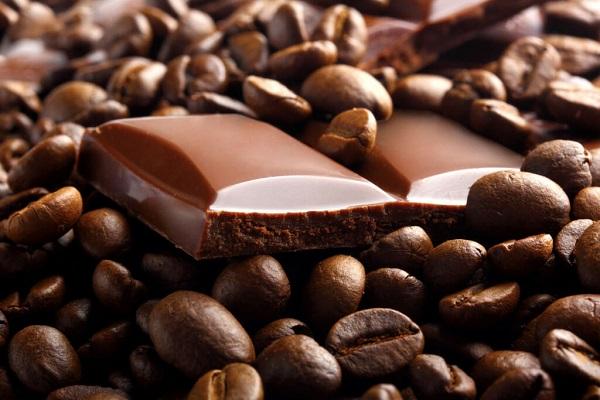
Walking hens
Walking chickens is worth not only for the sake of getting enough eggs, but also in order not to get a flock swollen with fat in the spring. After all, obesity is a big problem that is not so easy to solve.
There are some tips for organizing bird walks in the winter:
- the air temperature outside should not be lower than 8-10 degrees of frost;
- do not let the birds go for a walk if there is precipitation or a strong wind is blowing;
- on a walking yard you need a bedding of hay, sawdust or sand;
- baths with sand or ash must be present to prevent parasite infestation;
- so that frostbite does not happen combs and earrings, they are smeared with petroleum jelly.
Feeding
Laying hens are fed according to their regime. It is considered very bad if from time to time the birds begin to either overfeed or underfeed. As well as feeding at different times of the day.
Chickens eat no more than 2-3 times a day. Moreover, three meals a day is necessary if it is not possible to often take the chickens out for a walk, in other cases it is enough twice a day.
In the absence of an established feeding regime, the chickens trample at the trough, waiting for the owner to feed them. If feeding is stable at the same time, hens quickly get used to it and come to the feeding place exactly on schedule.
The first feeding is carried out after the bird wakes up, and in winter, with additional lighting, as soon as the light turns on.
In the morning, it is more advisable to give a mash of boiled potatoes, various ground grains, crushed eggshells and bran, but in winter, give a little less mash.
In the evening, chickens are fed an hour before perching. The time is calculated so that the chickens have time to eat their assigned rate.
Monitor the quality and norms of poultry feeding. The quantity and quality of eggs obtained from hens in most cases depends on this. To increase egg production, the following main components are added to the feed:
- Minerals Mineral additives are mixed with grain or added to wet mash. They contain fluoride, calcium and zinc. Salt, limestone, shells, feed chalk are used as such additives.
- Protein. Everyone knows that the bulk of the egg mass falls on the protein. It is found in legumes, cake, milk and fishmeal.
- Carbohydrates. It is the main source of energy for the body. Found in potatoes, cereals, vegetables, and root vegetables.
- Vitamins. Helps maintain immunity and increase bird activity. The breeder can either mix special additives into the feed, or use greens, carrots or grass flour.
The highest number of eggs ultimately comes from the bird that received all the nutrients. For example, on the wrong diet, a chicken can lay up to 100 eggs, but for each egg that it lays, it will spend 500 g of grain, while on the right one - 250 g. Plus, if the diet is improper, the eggs are small in size and less tasty. ...
Feeding rates for birds are drawn up taking into account actual or estimated productivity - the greater the egg production of chickens and their weight, the more feed they consume for feeding.
Many factors affect feeding rates, such as the level of productivity, the age of the bird and its weight, the season and conditions of detention - young individuals need more nutrients, and in winter they need more feed than in summer.
Read more about balanced feeding for laying hens here.
Recommendations
For beginners, it is better not to leave chickens for the winter. Having decided to start farming at home, you will have to create a good chicken coop with heating and ventilation. It is also important that it is better to keep only egg breeds in the winter. Birds survive the cold in the chicken coop only once. After that, it is not profitable to keep them. The meat ages, the egg production decreases. Therefore, it is better to send chickens to slaughter even before the onset of winter, and set aside funds for feed for the purchase of young stock in spring.
If the breeder nevertheless decided to leave the livestock, he organizes the correct conditions of detention, regime and nutritional standards, monitors the careful care of winged pets. In winter, this is most important. The cleanliness of the dishes, the litter on the floor, and the condition of the nests affect the spread of infection, which is most dangerous in cold weather. The remnants of food will lure rodents - no less dangerous enemies of birds. Therefore, close attention is paid to cleaning the premises in the winter.
Vitamin Supplements and Minerals
With the right amount of minerals and nutrients in the bird's diet, its health and productivity level will improve significantly. These vitamins and minerals include:
- Calcium participates in the formation of eggshell. There is little calcium in the grain, so feeds that contain minerals are added to the diet.
- Phosphorus in sufficient quantities is in the eggshell, but before feeding the bird, the shell must be washed, boiled, dried in the oven and ground. Also a valuable source is bone meal, which is made from bones by burning and pushing them apart.
- Chlorine and sodium. Common table salt is considered to be the best source of these elements. For feeding, take only finely ground salt or salt dissolved in water. It influences the taste of food, makes it better, and increases appetite But be careful, as pet poisoning may occur if misused.
Taking care of birds is the key to success
In winter, it is especially important to help the hens maintain their immunity. Green grass, young shoots of clover and nettle are not available at this time, therefore the artificial introduction of various vitamins and minerals necessary for their body is strictly mandatory in winter.It is extremely important to select their complexes in conjunction with a veterinarian, only then it will be possible to count on good egg laying rates.
So, in order to bring all the above recommendations into the system, consider the following list of recommended food products and their quantities per 1 bird per day in winter:
- chalk - 3 g;
- boiled potatoes - 120 g;
- bone meal - 2-3 g;
- grain - 60 g;
- cake - 6-8 g;
- whey - 90-100 g;
- bran - 15 g;
- table salt - 0.5 g;
- warm grain mash - 35 g.
It remains only to calculate the livestock and prepare the required amount of food for the layers, based on the already known proportions. Overfeeding the birds is not recommended because the excess food will turn into body fat and may interfere with the amount of eggs laid. In addition, chickens may simply not eat excess food, and it will quickly disappear (this primarily concerns boiled cereals and warm whey-based mixtures), which is an irrational budget expense. It will be useful to take a closer look at how much pets can eat, and each time try to prepare exactly that amount of food.
Forced molt
With the arrival of autumn, a feather change begins in poultry, which is called periodic. At this time, a natural process of feather renewal takes place on the eve of winter. Natural molting takes more than 60 days, while forced molt takes only 45-50 days. Among the advantages, there are significant savings in feed, an increase in the quality and weight of eggs, and an increase in the duration of egg production.
In order to stimulate forced molting, a whole range of measures is being carried out, including:
- change in diet;
- artificial fasting;
- change in the duration of daylight hours;
- increased body temperature.
Forced molt begins and ends at the same time for the entire herd. After these procedures, egg production at first rapidly decreases, and then disappears altogether.
In order to stimulate the rapid growth of new feathers, intensive feeding of the hens begins. As a result, a new period of egg production begins, which is characterized not only by an increase in the mass of eggs, but also by an increase in hatchability and vitality of the new generation.
Using electric units for preparing feed
To prepare food of the required quality, the food must be properly chopped. It is difficult to do this manually, therefore, with a large number of poultry, it is worth considering purchasing special equipment. The electric shredder is able to crush not only root crops, but also grain and legumes. The best is a unit with a two-phase motor. It is more powerful and will provide food for all livestock.
The steamer will become an irreplaceable assistant in the household. This is a device designed for the preparation of feed from food waste, herbs and juicy feed. With its help, you can prepare healthy and high-calorie food in the shortest possible time.
Age of chickens suitable for egg production
Despite the fact that the life expectancy of chickens is from 12 to 14 years, the most active period of egg production is young age, up to a year. Fertile individuals are capable of producing up to 300 eggs per year. After a year, egg production decreases by an average of 10%, and after 5-7 years it disappears altogether. There are periods of complete absence of egg production, which are called, as already mentioned above, molting.
In large rural enterprises, chickens are kept exclusively for up to a year, just during the period of its maximum egg production, and for a year and a half they are allowed to slaughter, because there is no financial sense to keep a bird that produces a small number of eggs or does not bear them at all.
If the farm is smaller, then the owner can keep chickens up to the age of 2 or even 3 years. However, further chickens are also sent to slaughter, since after 3 years the egg production rates fall much more intensively than after a year.
As for the roosters, they are kept for no more than 4 years, while the period of their sexual activity lasts.
At a young age, hens lay small eggs, which are assigned a low grade (C2 and C3). But nevertheless, it is these eggs that are considered the most useful.
What food to cook for the winter
The question is worth considering in more detail. What can be harvested on a personal plot? Root crops, melons and hay.
Roots
This refers to carrots, fodder and table beets.
- Carrot. If there is a desire and opportunity, then you can sow a separate bed especially for chickens. Choose fodder carrots, their yield is several times higher than ordinary carrots. It looks pale, tastes with a slight bitterness. For birds, these characteristics do not matter, the main thing is that a root crop with a full range of nutrients. During storage, make sure that you do not get specimens with obvious rot damage, one carrot can cause damage to a large amount of the crop. If the chicken coop is warm, then you can store carrots in it. If the water in the hen house freezes, then the roots must be transferred to a warm cellar.
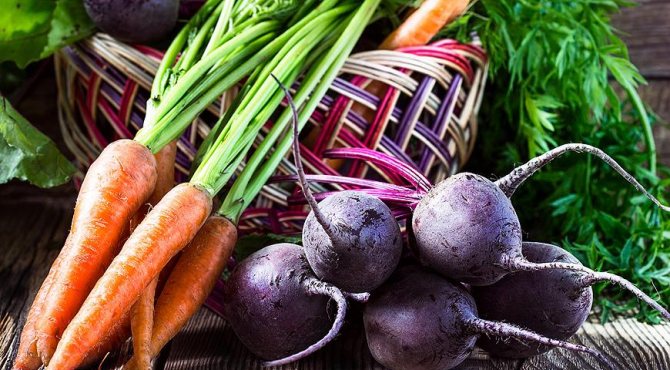

Carrots and beets for chickens - Beetroot. All non-standard vegetables can be stored for storage. Of course, except for those with obvious signs of the disease. Fodder beets must be sown separately. In terms of productivity, it is much superior to the canteen, and in terms of the set of nutrients it is in no way inferior to it. You can store it in piles or in a cellar. It is recommended to cover the piles with burlap to prevent drying out. Under no circumstances use plastic wrap, the beets will become wet under it. Root crops must breathe, and the film completely seals the crop.
The amount of these feeds should correspond to the number of chickens. On average, it is recommended to plan for one hen for the winter up to 12-13 kg. These calculations include inevitable weight loss. Fodder beets are excellent feed for all animals. Sowing it is very profitable, a large harvest is piled up, covered with straw and buried in earth. Several vents are required for ventilation. The air is made from a beam of scraps.
Melons
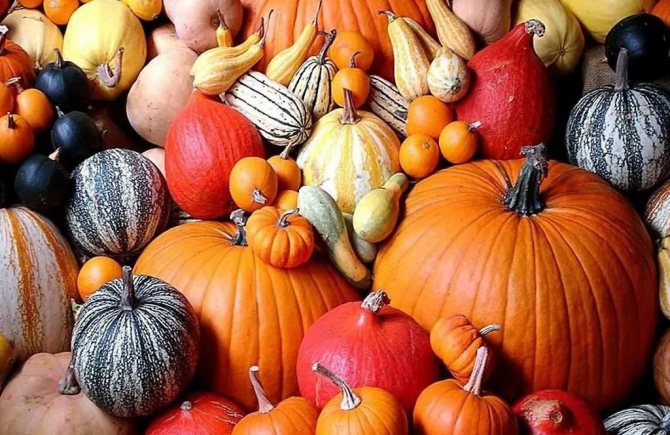

Pumpkin for feeding chickens in winter
Pumpkin is sown for chickens especially for winter feed. This vegetable is perfectly stored until the new harvest, it is distinguished by its high qualities in composition and quantity of vitamins. Pumpkin is stored the best, the main thing is not to damage its skin during harvest and storage. Store the vegetable in a basement, cellar or warm extension. If there are a lot of overripe zucchini in the garden, then these plants will also be used for winter feed for layers.
Practical advice. Zucchini do not last long, use them in feed first.
Potatoes
It is not specially grown for feeding hens. Use small culled or damaged tubers. It should be noted that summer residents are not very fond of adding potatoes to the winter diet of layers. This is due to the fact that it takes a long time to cook the feed: they need to be washed, filled with clean water, boiled, kneaded, cooled, and only then can they be added to the feed. This operation will have to be repeated, at best, every other day. To the costs of physical labor, one should also add monetary losses for energy resources and it will become finally clear why layers do not often have to eat boiled potatoes.


Feeding roosters
Which breed to choose?
Often, it is worth taking measures to increase the level of egg production even when arranging a chicken coop and choosing chickens. There are certain breeds that are considered very fertile:
- Leghorn broke the record for egg production - 371 eggs per year. Reproductive age starts at 20 weeks. Of the minuses - they do not tolerate noise.
- Lohman Brown They are distinguished by a high level of tolerance to cold climates, they have impressive size, which, at the end of the reproductive period, makes them a good source of meat.
- Hisex belongs to the Leghorn hybrids. Benefits:
- resistant to infectious diseases;
- tolerates low temperatures well;
- not too demanding on the quality of feed.
When choosing laying hens, you can be guided by the following criteria: the most egg-laying hens have a small oval head, bright red earrings, a beak bent from below and thick plumage.
Video tips to increase egg production in chickens
Your attention is presented with a video in which an experienced breeder shares his secrets for improving the egg production of chickens:
When using these tips to improve egg production, keep in mind that they only apply to healthy hens, because there are reasons for decreased egg production that are not related to the change of season. And if the problems are related to diseases, then these recommendations will not help solve the problem - you will already need to contact a veterinarian.
ferma.expert
What should be the nutrition for laying hens
If you want the chicken not to stop rushing all year round, then it is necessary to include in its diet all the necessary minerals and vitamins. Such a diet should include:
- proteins: vegetable (yeast, legumes, nettles, etc.) and animals (fish and bone meal, worms, shellfish, whole milk and cottage cheese);
- fats: oats, corn, and fish oil;
- vitamins: baker's yeast, dry hay, grass and pine flour, tops, grated carrots, etc.;
- carbohydrates: vegetables (fodder beets, pumpkin, potatoes, carrots), cereals (millet, barley, wheat, sorghum, etc.);
Diet of chickens in winter
Every farmer needs to know how to feed the chickens in winter in order to rush better. A number of the main components of the diet remain the same, regardless of the season. Some components can be replaced with similar functionality.
In order for a laying hen to feel comfortable in winter, you will have to work a little in the summer:
- stock up on cabbage and other essential vegetables;
- mow and dry the hay;
- grind pine flour;
Feeding chickens in winter should be two times a day - morning and evening.
Morning feeding of chickens in winter:
- porridge
- food leftovers from the table
- milk and cottage cheese
- chopped boiled potatoes
- wet mash
Add chopped shells, pine flour, herbal mixtures and chalk to the mash.
Evening feeding of chickens in winter:
- pour dry grain or mixtures;
- add chopped corn tops;
- add bran;
- we can give barley cake as an additive;
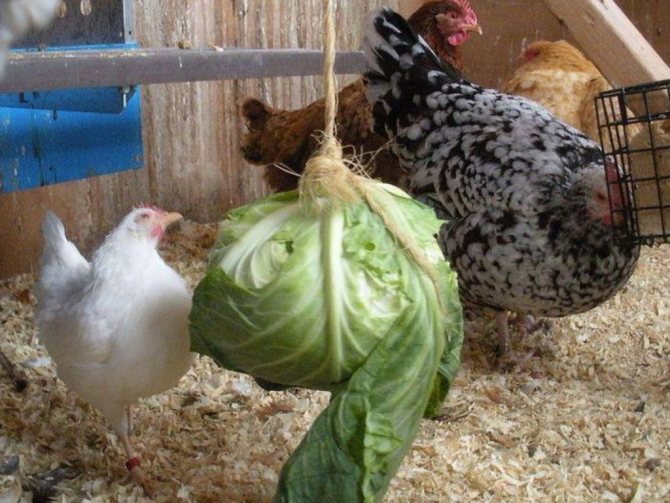

Varieties of feed for chickens
Remember that chickens need dry grain all year round, since dry grain contains the most nutrients for activity and good productivity. Experienced poultry farmers advise feeding chickens with special mixtures, because in them the percentage of various cereals is most optimally selected. This is how the composition is distributed in the combined mixtures: wheat - 50%, corn grain - 30%, barley about 20% and other cereals no more than 15-20%, as well as cake and bran.
Mineral feed - feed consisting of several types of mineral flour, sodium salts. Combined mixtures can be purchased at loyal prices.
Green food is food that is in short supply during the winter. In spring and summer, chickens feast on fresh grass in plenty, but they do not have the opportunity to accumulate and store useful substances obtained from greenery. The task of the owners is to ensure that the chickens are fed with grass in the winter. Feed the chickens with dried hay or buy green mixtures from various herbs and needles. The progress of the industry makes it possible to preserve all the necessary vitamins in such mixtures.
Vegetables in the diet of chickens are an important component and an endless source of vitamins, amino acids and fiber. Hens can be fed with almost all vegetables, but some only boiled.If it is not possible to pamper the kludge with fresh vegetables, then you can limit yourself to ready-made feed. They contain a sufficient amount of nutrients and vitamins.
What to feed the laying hens to rush in winter
Food for feeding chickens in the winter season should be as rich as possible, varied, as well as high in nutrients and vitamins. You need to feed the following:
- soaked white and black bread, chickens simply adore it;
- vegetable cakes and meal made from decomposed plants that grow in gardens and orchards. They should be mixed into mash and mixed feed;
- remnants of food waste, in the form of meat, fish and crushed bones;
- chopped berry and fruit waste, cabbage leaves, beet and carrot tops, which should be mixed into the mash;
- also many useful nutrients and vitamins are found in wild plants. These feeds are leaves and berries of hawthorn, mountain ash, silage and hay of succulent grasses, chestnut and rose hips, as well as needles, clover and quinoa seeds. The blanks are dried, cut into small pieces and added to feed.
Also, the obligatory diet of laying hens should include:
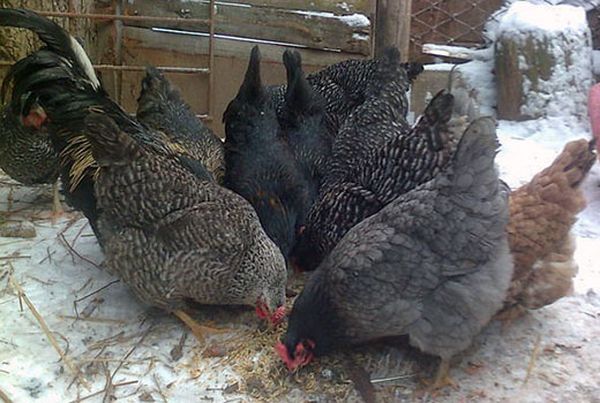

Shell
For an adult laying hen, the daily norm for eating shells is at least 3-5 grams, the diameter of which should be 1-3 millimeters. It is best to give shells in the morning on an empty stomach, when the laying hen's body is ready to eat.
The norm of shells from the daily diet of a laying hen is 6%. With an excess, it can be observed: metabolic disorders, thickening of the shell, damage to the mucous throat.
a piece of chalk
Introduce into the diet in an amount of 0.3-0.5%. The supplement must be mixed with the main feed, avoiding feeding alone. You should also exclude chalk, which may contain glue impurities.
Gravel
Gravel is a kind of "mill" for poultry. Once in the stomach, it settles and helps in grinding the grain. That is why gravel should be given cleanly.
The lack of gravel in the diet of chickens is fraught with metabolic disorders and exfoliation of the inner cells of the stomach.
Ash
Based on the calculation, they feed her 10 grams per head. This complex includes: 33% calcium, 2% phosphorus, 9% sodium, 7% potassium, 7% magnesium, 0.47% manganese and 0.8% iron.
This additive increases the frequency of egg laying and reduces the odor of droppings.
Fish and meat and bone meal
This product is more classified as a high protein feed than a mineral feed. But if you nevertheless decide to add it to the diet, then it should be taken into account that fishmeal contains a large amount of phosphorus, and bone and meat-and-bone meal contains potassium.
The rate of application of the product in the bulk is at least 6% of the feeding volume. The daily dosage per individual is 7 grams, in the spring - 11 grams, and in the winter season - 5 grams.
For laying hens, such an additive is made immediately in a crushed form so that the bird cannot eat too much and does not accumulate unnecessary fat.
Vitamins and premixes
Basically, a deficiency of vitamins and minerals occurs in the winter season and can lead to a host of problems:
- decreased activity;
- mass death;
- decrease in egg production;
- increased incidence.
Premixes have an extremely beneficial effect on the health of the bird, as well as its productivity. So, provided that you begin to add the product in question to the chicken diet, you should expect:
- assimilation of consumed food;
- improving the quality of eggs;
- strengthening the immune system, disease resistance;
- increasing the strength of the shell and its thickening;
- rapid growth of chicks after hatching;
- productivity increases.
In addition, such additives allow, in some cases, to reduce the cost of feed.
How is feeding in winter different?
Poultry feed in the cold season should be as varied as possible and contain more nutrients. Such requirements are due to several factors:
- low temperature in the hen house;
- decrease in the level of mobility of the bird;
- the impossibility of independent receipt by the bird of the normalized amount of protein food and green food.
In winter, you need to feed the birds 3-4 times, try to give them more juicy and green food during the day and dry food in the evening. Chopped or chopped carrots, pumpkins, beets, zucchini are suitable as a juicy food.
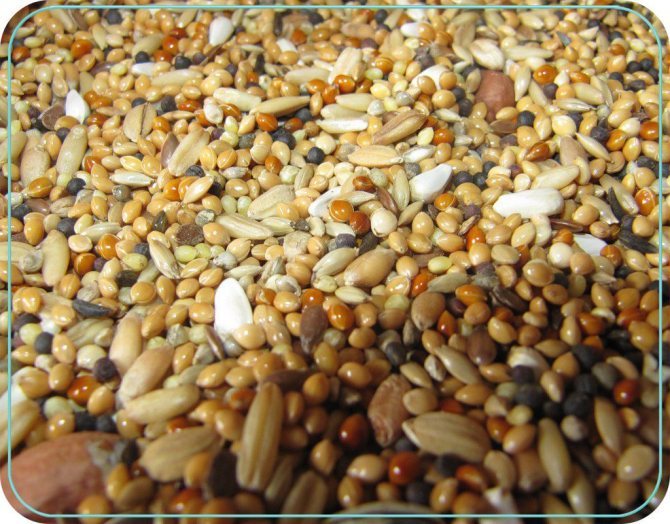

Combined feed
Vegetables should not be skinned up, as birds prefer to peck at the flesh. If the feed is given in a grated form, then it is mixed with ground cereals - this improves the digestibility of the products.
Green food is also included in the diet in the maximum amount. In winter, you can give chickens fresh branches of coniferous trees - the birds get the necessary nutrients from them, and the substances released by the needles disinfect the air in the chicken coop. It is also worth feeding the birds with hay, dried nettles. Sprouted oats and wheat are extremely useful, they contain the maximum amount of nutrients and chickens eat such a product with pleasure.
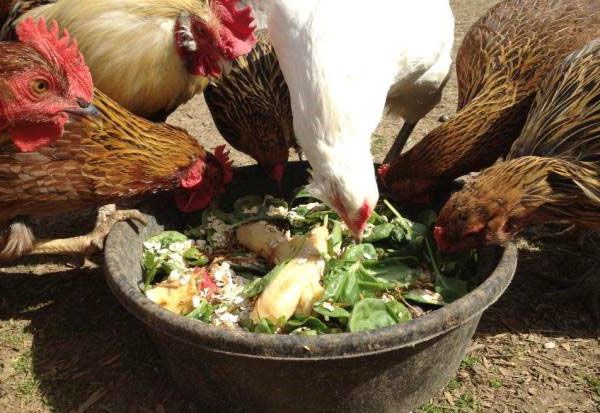

Chickens need green forage as well as cereals.
In winter, birds need:
- fish meal or oil;
- fermented milk products - whey, cottage cheese;
- high calcium supplements - eggshells, chalk, feed shells;
- warm water - in order to provide chickens with constant access to heated water, it will need to be changed several times a day.
For winter feeding of birds, you can grow on your site fodder varieties of carrots and beets, pumpkin, zucchini, potatoes.
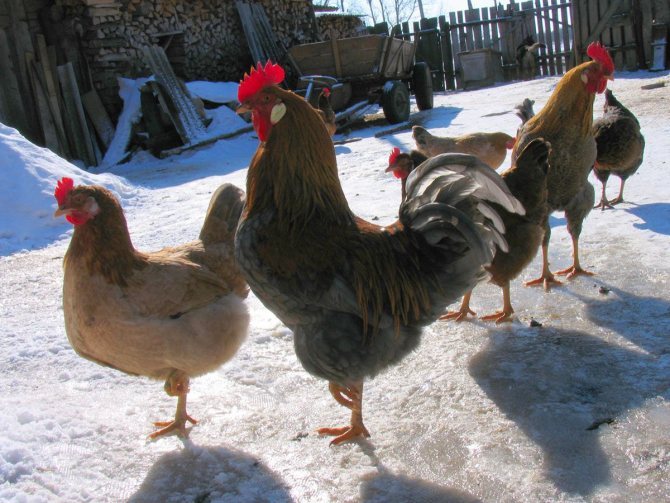

Fall Stock Helps Chickens Rebalance Nutrients
Indoor climate
It's no secret that the better the conditions, the more productivity, good health and no mortality in the chicken coop will be.
In order for the bird to endure the winter well and feel comfortable, certain conditions must be observed:
- insulate the room in advance, without waiting for the cold weather;
- cut down on long walks in cool weather;
- try not to give chickens cold water.
The minimum temperature in the chicken coop must be at least + 15 ° C. It is in such conditions that chickens will continue to lay eggs, but their productivity will be reduced. If the temperature in the chicken coop is significantly lower, then health and productivity can suffer greatly.
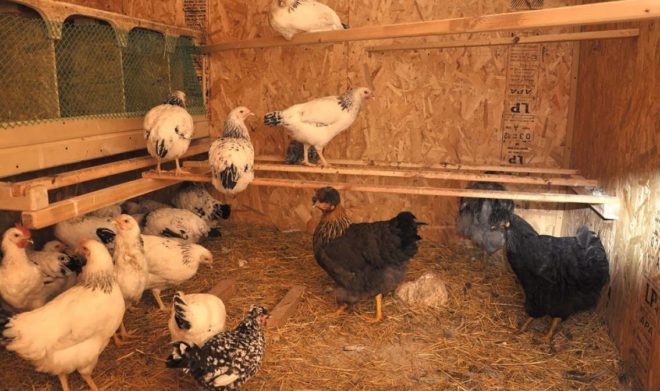

If you want the chickens to continue the systematic laying of eggs, then you must adhere to a temperature of + 18 ... + 25 ° С. And also take into account that the duration of daylight hours will be 10-12 hours.
To create suitable conditions for birds, you should take into account the climatic features of the area. In the central and northern regions, heating devices will have to be used, and in the southern regions, even insulation will not be needed.
Healthy Supplements for Chickens
How to feed the chickens in winter so that they can rush? The above are the basic principles of feeding chickens in winter, but you can add a number of foods that will increase the egg production and activity of your winged pets.
Check out the foods that will have a positive effect on the health and productivity of your herd, especially in the winter diet of chickens.
Food leftovers. Almost everything that happens on your table is suitable for feeding the eternally hungry quacks, especially the leftovers of bread, cereals and vegetables you have not eaten. Above all, don't overdo it with variety.
Baker's yeast. Yeast is familiar to poultry farmers not only as a component of pies, but also as an additive to the diet for chickens, thanks to which layers gain weight better and rush better. The maintenance of immunity is regulated by yeast. It is recommended that yeast not be fed more than five percent of the total daily diet.Excess will lead to problems in the digestive tract.
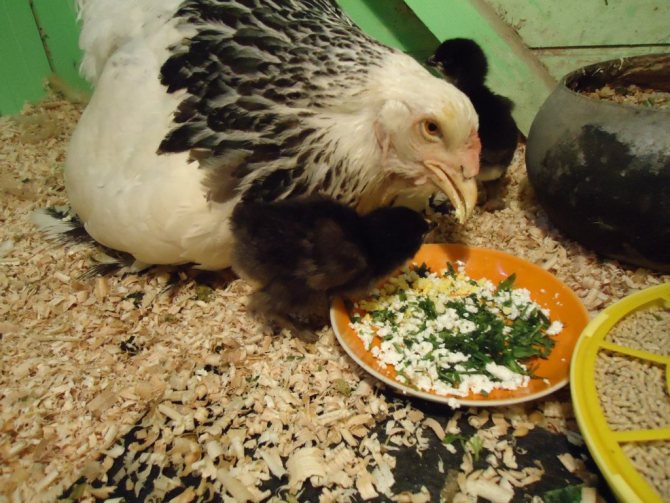

Fish, fish oil. Fish in the diet of chickens in winter is an important point for preventing chickens and roosters from various diseases. Fish serves as a source of vitamins necessary for maintaining health in the bird's body. Love fishing, great, give the chickens the remains of the fish in chopped form or in the form of broth. There is no way to fish, giblets purchased separately or in a fish or pharmacy fish oil, the price of which is cheap, will do.
Sprouted grain is practically a panacea for chickens and chickens in winter. The content of vitamins and essential antioxidants is invaluable and incomparable in usefulness to ordinary grains.
Worms and maggots in the winter diet of laying hens are a valuable source of protein, vitamins (more group B) and minerals. To provide your livestock with maggots in winter, you can breed them yourself in a separate warm room or purchase them. Today it is possible to purchase flour from maggots and worms in a specialized store, which does not reduce the usefulness of this product.
Bird age and health
The age of the bird itself has a great influence on the quality of the eggs.
Chickens have the best fertilization and hatchability of eggs at the age of 2 years, at 3 years of age, egg production significantly decreases, and in young animals, it is often completely absent.
With an increase in the age of laying hens (up to 2.5 years), an increase in the specific and absolute weight of eggs is observed, and the weight of the shell and yolk increases, as well as the amount of sugar in them. The latter, in the first days of incubation, plays a huge role in the development of the embryo.
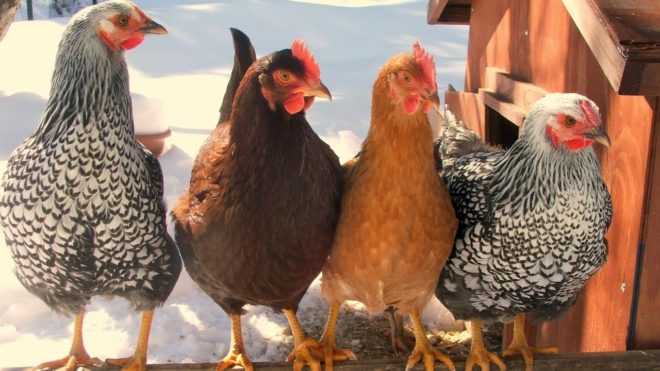

With age (4-5 years), the quality of the shell deteriorates, the egg decreases in size, and the surface becomes porous, which is especially noticeable in the last days of egg production. This leads to a decrease in hatchability and a decrease in chick weight at hatching.
Do not rush to buy expensive feed and various additives so that the chickens rush well in the winter. Laying hens will continue to delight you with their productivity, especially if their food is varied, the litter is warm, and the length of the day is long.
How to feed chickens in autumn and winter so that they rush well
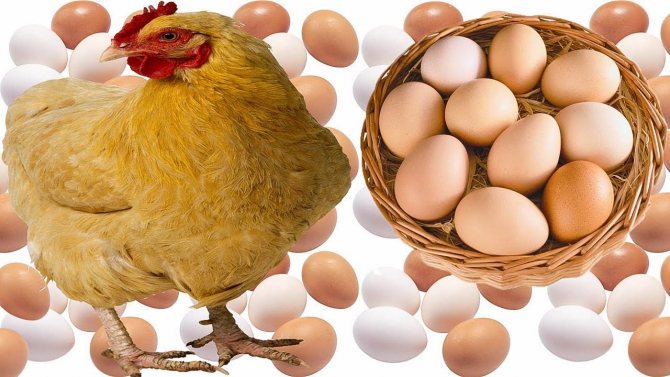

The egg production of chickens directly depends on the quality of their nutrition. Restrictions on daylight hours, movement and grazing of birds in winter and autumn can affect their productivity. The use of feed that provides the poultry body with all the necessary substances and microelements can improve the egg production of the hen and provide the owner with the optimal number of eggs at any time of the year. Vitamin complex courses will increase immunity to viruses and infections.
Types of feed
In the autumn-winter period, chickens are deprived of natural food from grazing. Diet changes can cause deficiencies:
- fiber and trace elements from fresh grass;
- proteins derived from worms and larvae.
Shorter daylight hours and reduced mobility reduce the need for food. The slowdown of internal processes leads to a decrease in egg production up to its loss.
The choice of quality feed compensates for the lack of nutrients and solves the question of how to feed the chickens in autumn and winter so that they rush well.
For laying hens, manufacturers have developed special types of feed aimed at increasing the egg production of birds.
Purina compound feed
Purina is the leader in pet food. Zoologists, biologists and veterinarians took part in its development, which ensured that all the needs of the bird's body were taken into account. Oviposition productivity is provided by the components that are part of:
- phyto fat;
- limestone flour;
- sodium chloride;
- sodium bicarbonate;
- enzymes.
Eating Purina Layers improves the following:
- taste and nutritional characteristics of eggs;
- egg production;
- sizes;
- shell quality;
- duration of the masonry cycle;
- incubation properties of breeding eggs.
Compound feed "TD ECO FOOD"
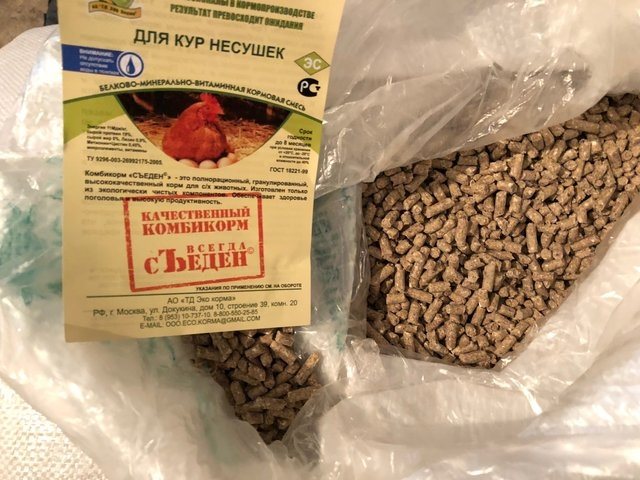

Protein-vitamin-mineralized feed mixture (BVMKS) is balanced in terms of the number of components:
- high protein components;
- mineral products;
- vitamins;
- amino acids;
- macro- and microelements;
- Dietary supplements (biologically active additives).
The use of BVMKS allows achieving the following results:
- accelerated process of shell formation;
- large egg mass;
- increase in egg production.
Compound feed "Kalinka"
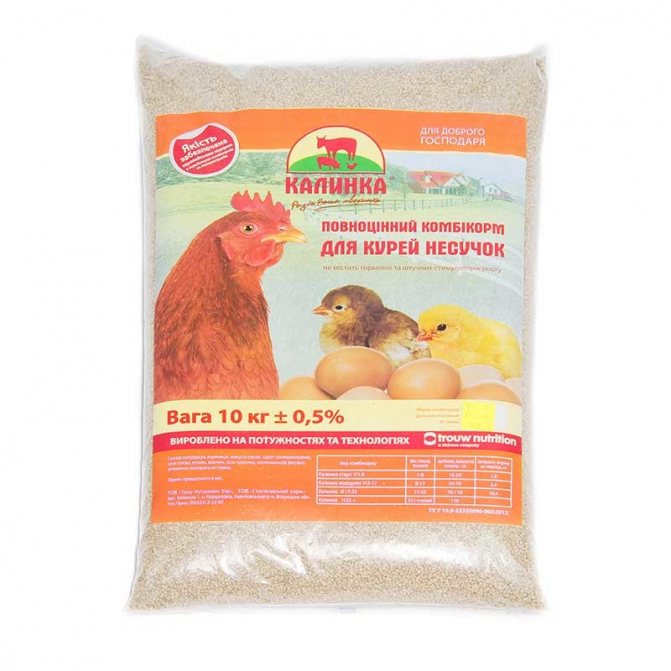

"Kalinka" is a complete feed of European quality, produced according to Dutch technologies. The composition includes only natural raw materials that ensure the health of the bird. Growth-promoting hormones and antibiotics are not used by manufacturers. The mixture compensates for the energy costs of layers by enrichment:
- enzymes;
- limestone;
- monocalcium phosphate;
- coccidiostatics.
While maintaining egg production, Kalinka feed provides the following egg qualities:
- large size and weight;
- protein density;
- yolk color;
- shell hardness.
Summing up
In the article, we talked about how to feed the chickens so that they rush. So: food should be fortified and with a sufficient amount of nutrients (fiber, protein, amino acids, etc.). Stock up hay and healthy grasses for winter feeding from summer. The amount and calorie content of food is calculated depending on the breed and the purpose of the breed, on weight and age. Keeping the house clean is a guarantee of protection from unwanted guests and disease prevention.
Warm winter to you and your hens!
- Similar posts
- When chickens start to lay - the age of egg production
- Do-it-yourself drinking bowl for chickens - drawings, photos, stages of work.
- Egg production of laying hens
Discussion: there is 1 comment
- Nestor: 02/06/2018 at 23:12
I can hatch chickens all year round, thanks to the incubator. Since there is a stable demand, the problem of food in winter is also urgent for me. I liked the article, it is informative.Reply
Recipes for preparing compound feed yourself
Self-prepared compound feed. must provide the body with the necessary amount of nutrients and trace elements. The ratio of ingredients is appropriate for the age of the laying hens and the season.
Recipe for a basic mix for adult layers:
Ingredient
Quantity, g
- barley;
- corn;
- wheat
Soybean meal (sunflower cake)
- fish (meat and bone);
- herbal (alfalfa or hay)
An alternative to the basic feed is a compound feed, consisting of the following components:
Ingredient
Quantity, g
- barley;
- corn;
- wheat
Soybean meal (sunflower cake)
- fish (meat and bone);
- herbal (alfalfa or hay)
The rates of the constituents of the mixture indicated in the tables are calculated to obtain 1 kg of the product. In order to feed one adult laying hen, you need 100-120 g of compound feed per day. The amount of feed should be calculated according to the number of birds.
Surplus feed should not remain in the feeders. Overfeeding birds will lead to obesity. The consequence will be the loss of ovipositor productivity.
In the absence of any components that make up the compound feed, you should not experiment. Lack of nutrition can lead to depletion of the body of birds, a decrease in egg production.

